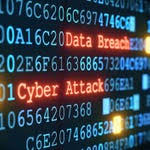The Elusive Fingerprint Why Cyber Attack Attribution Remains a Difficult Task.
Assigning blame, or attribution, for a cyber attack is a notoriously difficult process, plagued by technical hurdles, geopolitical complexities, and the ever-present risk of error.
So, why is it so hard to pinpoint the perpetrators?
Technical Challenges: A Labyrinth of Obfuscation
The very architecture of the internet plays against those seeking to attribute cyber attacks. Its global, decentralized nature allows attackers to operate from anywhere in the world, making physical location irrelevant. This, combined with sophisticated techniques designed to mask their origins, creates a daunting challenge:
- Routing Through Multiple Countries: Attackers often route their attacks through multiple countries, using compromised servers and proxy networks. This “hopscotch” approach makes tracing the attack back to its origin incredibly complex.
- Using Botnets: Botnets, networks of compromised computers controlled by a malicious actor, are routinely employed in cyber attacks. Identifying the individual who controls the botnet is a convoluted process, even if the compromised machines can be traced.
- Spoofing and Anonymity: Attackers routinely spoof IP addresses, making it appear as though the attack originated from a different source. They also utilize anonymity networks like Tor and other technologies to further obfuscate their identities.
- Code Obfuscation and Steganography: Malicious code is often deliberately obfuscated to make it difficult to analyze and attribute. Steganography, concealing code or data within seemingly benign files, adds another layer of complexity.
The Mirage of False Flags and the Minefield of Misattribution
Beyond the technical challenges, the intentional use of false flags adds another layer of deception. Attackers may deliberately leave clues pointing to a different individual or nation-state, designed to mislead investigators. This creates a serious risk of misattribution, with potentially devastating consequences for international relations.
Legal and Political Quagmires: Navigating the Tangled Web
Even when technical evidence points to a likely culprit, legal and political hurdles often complicate attribution efforts.
- Lack of International Consensus: There is no universally agreed-upon legal framework for investigating and prosecuting cyber crimes across national borders. This makes international cooperation challenging.
- Evidence Admissibility: The admissibility of digital evidence in court can be complex and varies from country to country. Establishing a chain of custody and ensuring the integrity of the evidence are crucial but often difficult.
- Geopolitical Considerations: Attribution can have significant geopolitical implications, potentially triggering diplomatic tensions or even armed conflict. The need for irrefutable evidence and careful consideration of the potential consequences is paramount.
The Importance of Accurate Attribution in Military Strategy
Despite the difficulties, accurate attribution is critical for national security and military strategy.
- Defensive Measures: Knowing the source of an attack allows military strategists to better understand the attacker’s capabilities, motivations, and potential targets. This knowledge can inform the development of more effective defensive measures.
- Deterrence: Credible attribution enhances deterrence by holding attackers accountable for their actions. The threat of exposure and potential retaliation can discourage future attacks.
- Response Strategies: Accurate attribution is essential for developing appropriate response strategies. It helps to determine whether a response should be diplomatic, economic, or military.
International Cooperation: A Necessary Imperative
Addressing the challenges of cyber attack attribution requires close international cooperation. This includes:
- Sharing Threat Intelligence: Sharing information about cyber threats and attack patterns is crucial for early warning and prevention.
- Developing Common Legal Frameworks: Harmonizing legal frameworks for investigating and prosecuting cyber crimes will facilitate international cooperation and extradition.
- Building Capacity: Investing in training and resources to build cybersecurity capacity in developing countries will help to strengthen the global response to cyber threats.
Conclusion: A Persistent Challenge, a Growing Necessity
Cyber attack attribution remains a complex and challenging undertaking. The technical sophistication of attackers, the potential for false flags, and the legal and political complexities all contribute to the difficulty. However, accurate attribution is essential for defending against cyber threats, deterring future attacks, and maintaining international security. By fostering international cooperation, developing robust technical capabilities, and carefully considering the potential consequences, we can improve our ability to identify and hold accountable those who seek to harm us in the digital realm.







